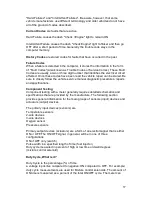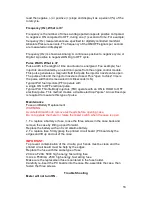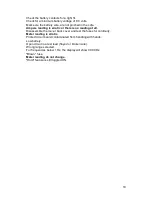
10
This test checks for efficiency of engine ground.
♦
Set the F-1860’s rotary switch to the voltage position (V).
♦
Insert the black lead of the F-1860 into the
COM
socket, and the red
cable into the
V/
Ω
Ω
Ω
Ω
/RPM
socket.
♦
Touch the positive (+) lead to the positive (+) battery terminal and the
negative (-) lead to the negative (-) battery terminal. Take note of the
reading, which will be the starting reference for future readings.
♦
Conect the positive (+) lead of the F-1860 to a clean screw on the engine
block.
♦
Connect the negative (-) lead of the F-1860 to the negative (-) battery
terminal.
♦
Press the MAX/MIN button on the F-1860.
♦
Disable the ignition so the engine doesn’t start; crank the engine for 2-3
seconds.
A voltage drop in excess of 0.5 V indicates defective ground.
Clean and inspect the battery cable connections and the ground, and test again.
IMPORTANT:
Repeat this test when the engine is completely warmed up. Heat expansion
may cause increased resistance.
(2)
Negative (-) Chassis Ground
This test checks for chassis ground efficiency.
♦
Set the F-1860’s rotary switch to the voltage position (V).
♦
Insert the black lead of the F-1860 into the
COM
socket, and the red
cable into the
V/
Ω
Ω
Ω
Ω
/RPM
socket.
♦
Keep in mind the commented reference reading from the previous engine
ground test.
♦
Connect the test lead to the point in the wheel arch or wherever the
vehicle’s ground is connected.
♦
Connect the negative (-) lead of the F-1860 to the negative (-) battery
terminal.





































